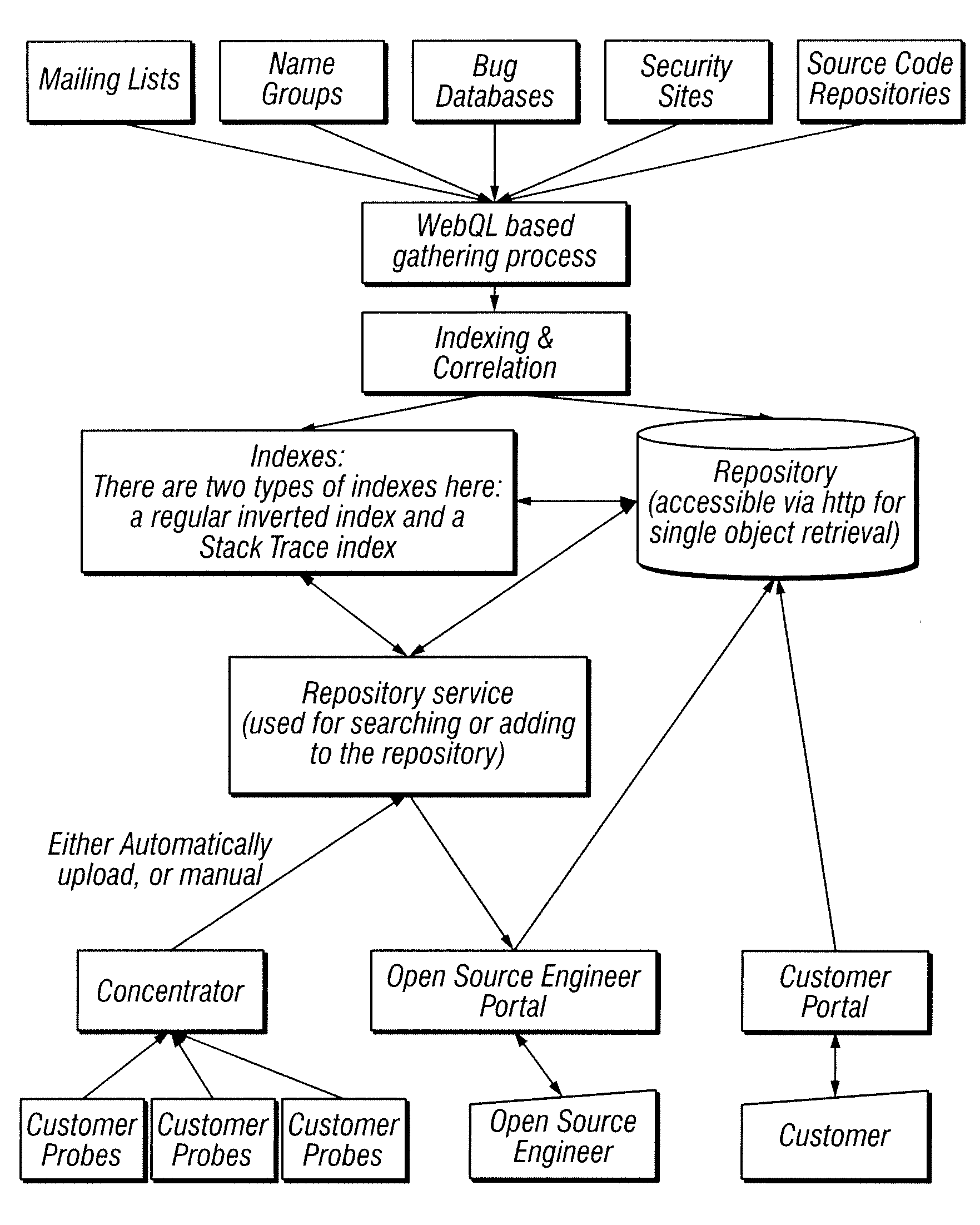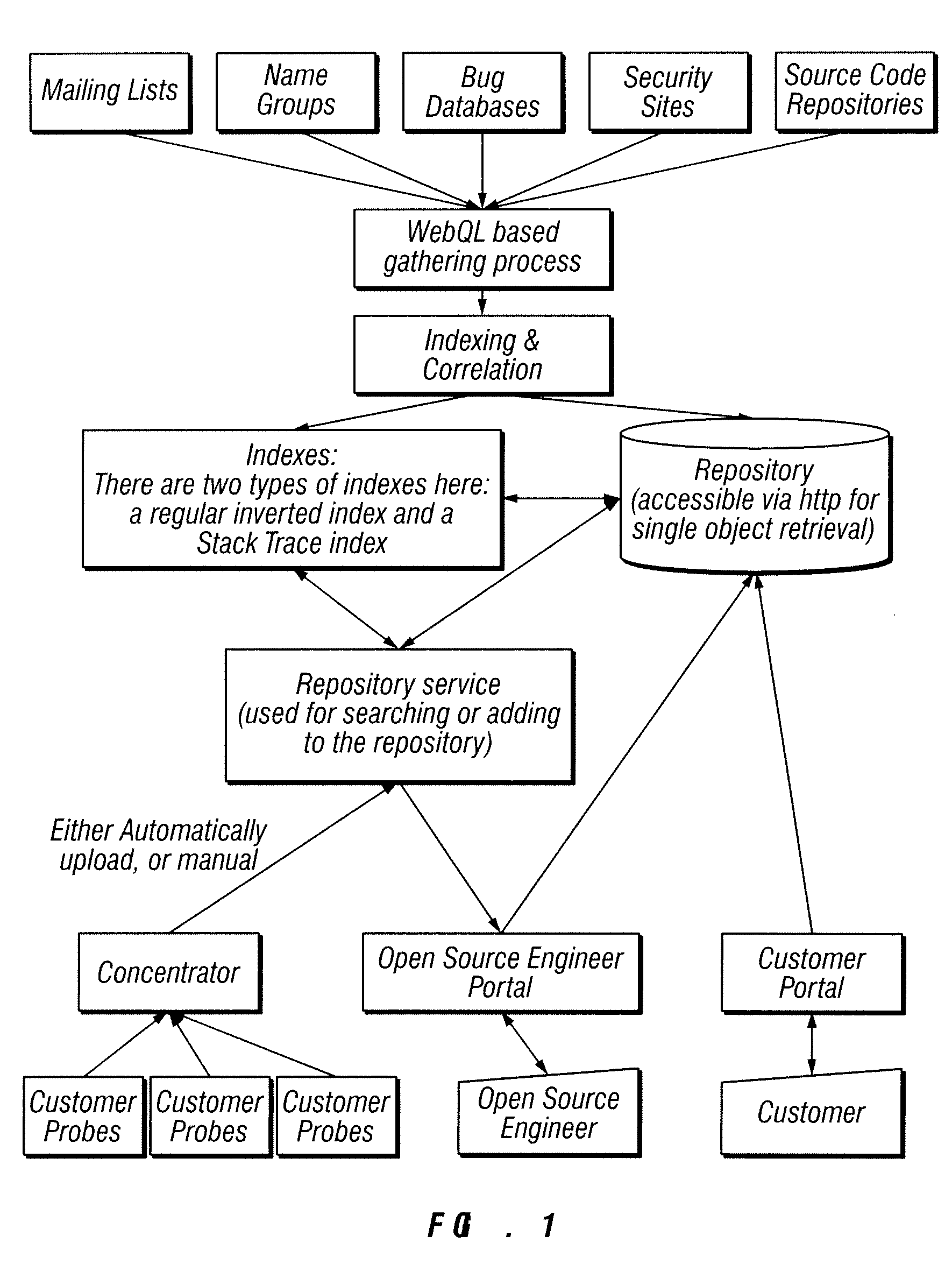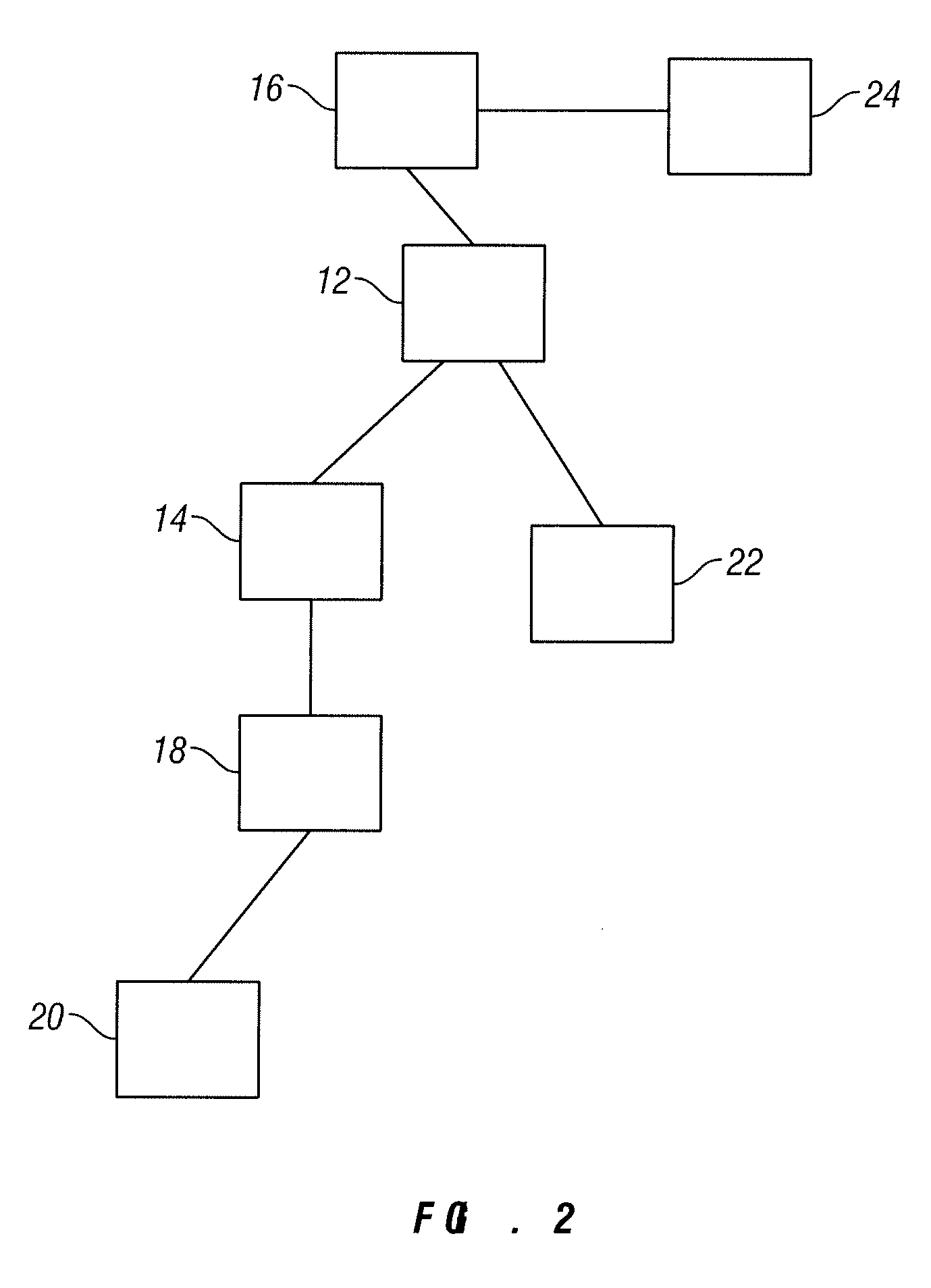Process for making software diagnostics more efficient by leveraging existing content, human filtering and automated diagnostic tools
a software diagnostic and content technology, applied in the field of software tools, can solve problems such as difficulty in setting such a breakpoint, inability to reproduce conditions, and bugs giving rise to actual errors
- Summary
- Abstract
- Description
- Claims
- Application Information
AI Technical Summary
Benefits of technology
Problems solved by technology
Method used
Image
Examples
Embodiment Construction
[0029]In one embodiment of the present invention, illustrated in FIG. 1, the methods and systems of the present invention make software diagnostics more efficient. This can be achieved by, (i) gathering information and digest it down to the most important nuggets and bugs to help customers preventatively avoid problems, and (ii) use probes that can pull information from a running process and help it match against the information gathered as well as information created.
[0030]There are three important parts of the information gathering process. In one embodiment, data is pulled from external data Sources. In one embodiment of the present invention raw data is filtered through a mix of automatic and manual processes. One embodiment of the present invention also opens up manual filtering on non-bug content by allowing tagging and annotations to be added on any content similar to the way the meta data is added to bug content.
[0031]A feedback loop can be used to provide the filtering. Add...
PUM
 Login to View More
Login to View More Abstract
Description
Claims
Application Information
 Login to View More
Login to View More - R&D
- Intellectual Property
- Life Sciences
- Materials
- Tech Scout
- Unparalleled Data Quality
- Higher Quality Content
- 60% Fewer Hallucinations
Browse by: Latest US Patents, China's latest patents, Technical Efficacy Thesaurus, Application Domain, Technology Topic, Popular Technical Reports.
© 2025 PatSnap. All rights reserved.Legal|Privacy policy|Modern Slavery Act Transparency Statement|Sitemap|About US| Contact US: help@patsnap.com



